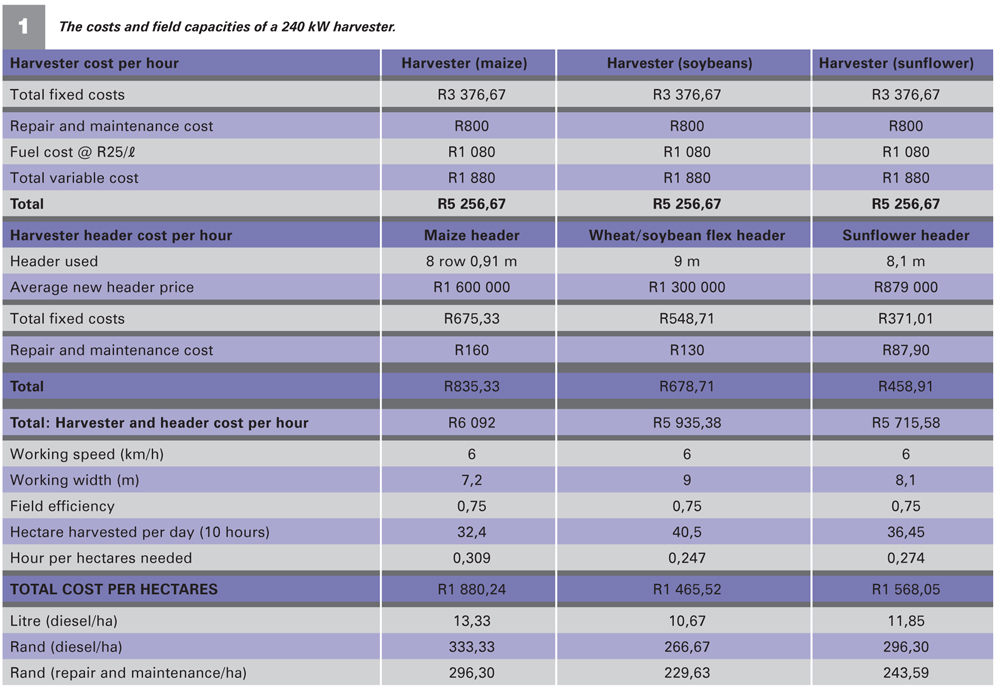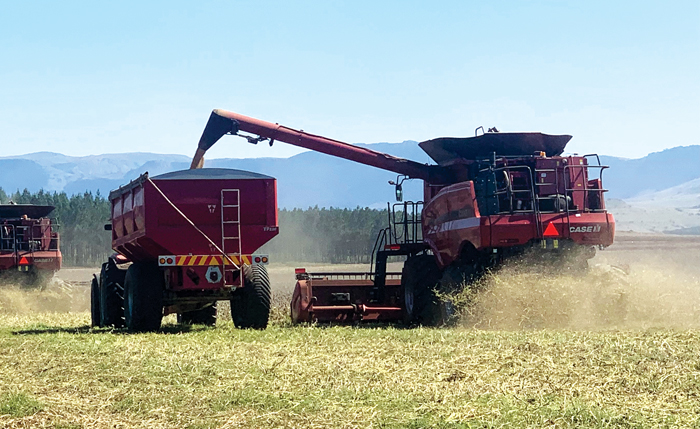February 2024
| PIETMAN BOTHA, INDEPENDENT AGRI- CULTURAL CONSULTANT |
 |
If you want to increase your profit and reduce the risk, consider harvesting soybeans and sunflower as early as possible to prevent shattering or bird damage. Shatter losses due to brittle pods increase as the moisture levels of pods and grain drop. For this reason, be on time with the harvesting of soybeans.
The harvesting process of soybeans and sunflower is a critical aspect in the profitable production of these crops. If something is wrong with the harvesting process, crop losses are unavoidable.
The sound of soybeans shattering with no harvester in the field, or a flock of pigeons in the dry sunflower field, can mean that a large portion of the income is lost.
There are not only losses due to the brittle pods, but the plant growth can also contribute to losses. Some soya plants and soybean cultivars are known to produce pods very low on the ground. If the harvester table cannot harvest low enough, many soybeans are left behind. Therefore, it is important to use the correct harvester header and to plant the correct cultivar.
The hectares a harvester can harvest are determined by the header width, travelling speed and the hours per day that a harvester can harvest. The overestimation of one of these factors will result in a large portion of the crop not harvested.
Harvesting low enough is easier said than done. Unrolled fields are very uneven and large stones in the fields can cause expensive damage to a harvester. Make sure that your harvester is insured against stone damage.
HEADERS
A flex header or flexi draper is needed to harvest the low-growing and low-podded soybeans. The flexi header will be able to follow the soil contours. Some headers are a floating, multi-section flexible header with a split reel. This allows the entire header frame, cutter bar and reel to follow ground contours as a unit.
A flexi draper header makes use of draper ‘belts’ that carry the crop to the feeder house. These feed so much smoother and allow farmers to harvest a little later at night due to the even feeding. This belt is also known to reduce soybean losses because the soybean plant is handled gently.
The higher the yield in the silo, the higher the income and the better the crop profit. When farmers must decide which header to buy, compare the crop loss against the header price to make a decision. The lower the loss, the better the header.
SOYBEANS: A DIFFICULT CROP TO HARVEST
To harvest a large portion of the harvester’s capacity per day, farmers must start as early as possible. Soybean plants can absorb the dew moisture, after which they get sticky and lose their brittleness. Wet soybean plants are difficult to harvest. Typically, the harvesters will break the cutter bar or the plants will get stuck around the threshing drum. This will have an effect on the number of hectares that can be harvested per day.
A rule of thumb is that a harvester with a 9 metre header over time will harvest between 20 hectares and 42 hectares per day, no more. To harvest on time, a farmer needs 1½ eight-row harvesters to keep up with one eight-row planter. It is important to understand that surplus harvester capacity is a risk entrenchment. This will help to increase the soybean profitability.
Harvesting a crop is an expensive action. In Table 1 the costs of maize, soya and sunflower harvesting are shown, using a 240 kW harvester which costs about R8 million and can harvest maize. At a speed of 6 km/h, 32 hectares of maize, 40 hectares of wheat or soybean and 36 hectares of sunflower can be harvested per day. As soon as the hours per day are decreased, the hectares are also less. In the case of soybeans, ten hours per day harvesting is difficult. So do your calculations accordingly.

To be able to harvest ten hours per day, the repair and maintenance as well as services must be done according to the specifications provided by the manufacturer. Read the manuals and keep to it. If something breaks, spares should be available. Prevention is better than downtime, especially in soybean harvesting. Service the equipment before the harvesting begins – this will save time.
Remember, a combine harvester normally works with an unloading wagon. The size of the wagon will be determined by the harvester. This unloading wagon will require an extra tractor and extra fuel. For a 240 kW harvester, the diesel needed for the unloading wagon can easily reach 10 litres per hectare. Remember to add these costs to your calculations.
Make sure that the harvesters are available on time and that the loss due to downtime is minimised by well-maintained harvesters.

Surplus harvester capacity will help increase profitability.
Publication: February 2024
Section: Pula/Imvula